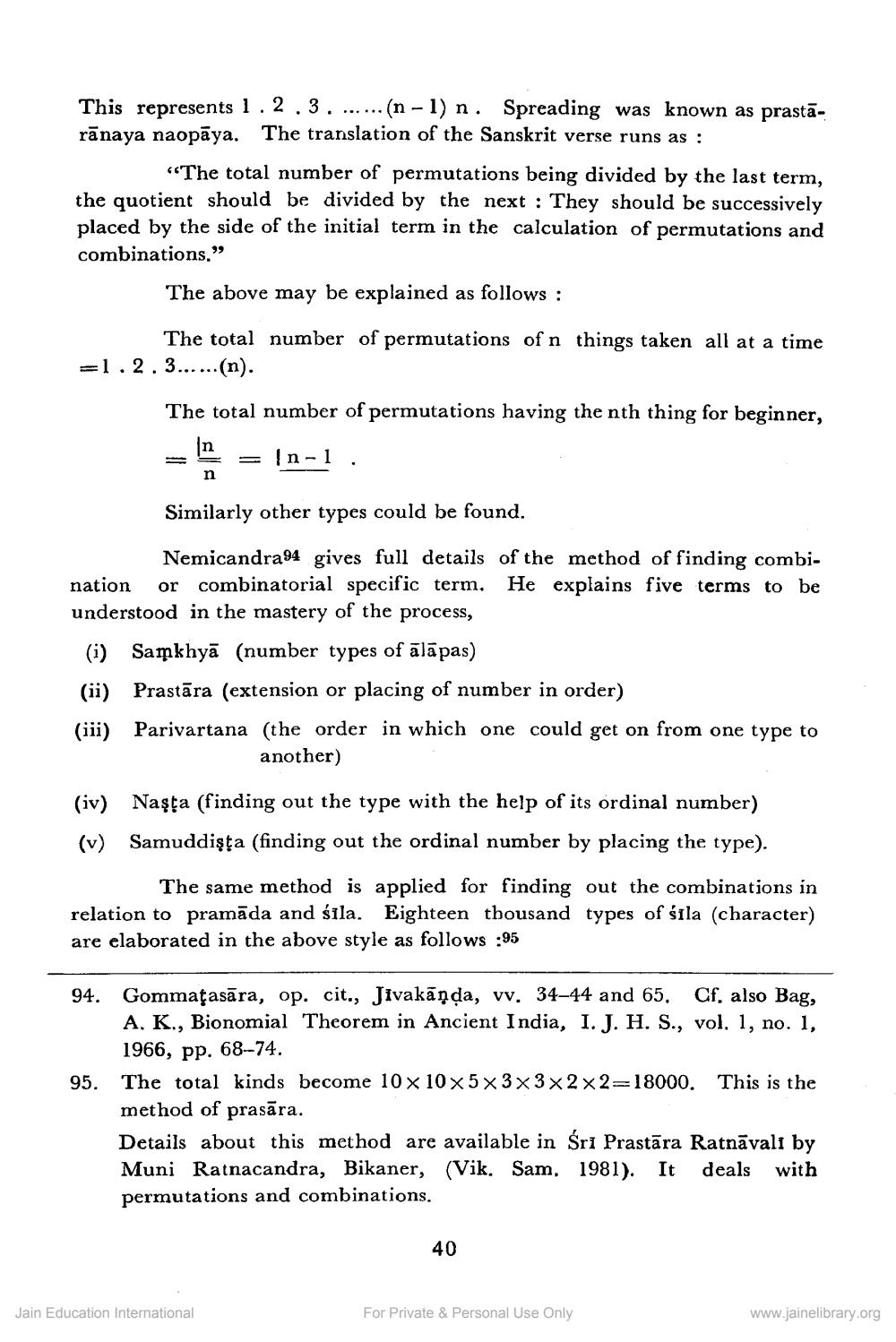________________
This represents 1.2.3. ...... (n-1) n. Spreading was known as prastārānaya naopāya. The translation of the Sanskrit verse runs as :
"The total number of permutations being divided by the last term, the quotient should be divided by the next : They should be successively placed by the side of the initial term in the calculation of permutations and combinations."
The above may be explained as follows :
The total number of permutations of n things taken all at a time =1.2.3......(n).
The total number of permutations having the nth thing for beginner, = n = {n-1
Similarly other types could be found.
Nemicandra94 gives full details of the method of finding combination or combinatorial specific term, He explains five terms to be understood in the mastery of the process,
(i) Samkhyā (number types of ālā pas) (ii) Prastāra (extension or placing of number in order) (iii) Parivartana (the order in which one could get on from one type to
another)
(iv) Naşta (finding out the type with the help of its ordinal number) (v) Samuddista (finding out the ordinal number by placing the type).
The same method is applied for finding out the combinations in relation to pramāda and śīla. Eighteen thousand types of sila (character) are elaborated in the above style as follows : 95
94. Gommațasāra, op. cit., Jivakāņda, vv. 34-44 and 65. Cf, also Bag,
A. K., Bionomial Theorem in Ancient India, I. J. H. S., vol. 1, no. 1,
1966, pp. 68-74. 95. The total kinds become 10 x 10 x 5 X 3x3x2x2=18000. This is the
method of prasāra. Details about this method are available in Śri Prastāra Ratnāvali by Muni Ratnacandra, Bikaner, (Vik. Sam. 1981). It deals with permutations and combinations.
40
Jain Education International
For Private & Personal Use Only
www.jainelibrary.org




